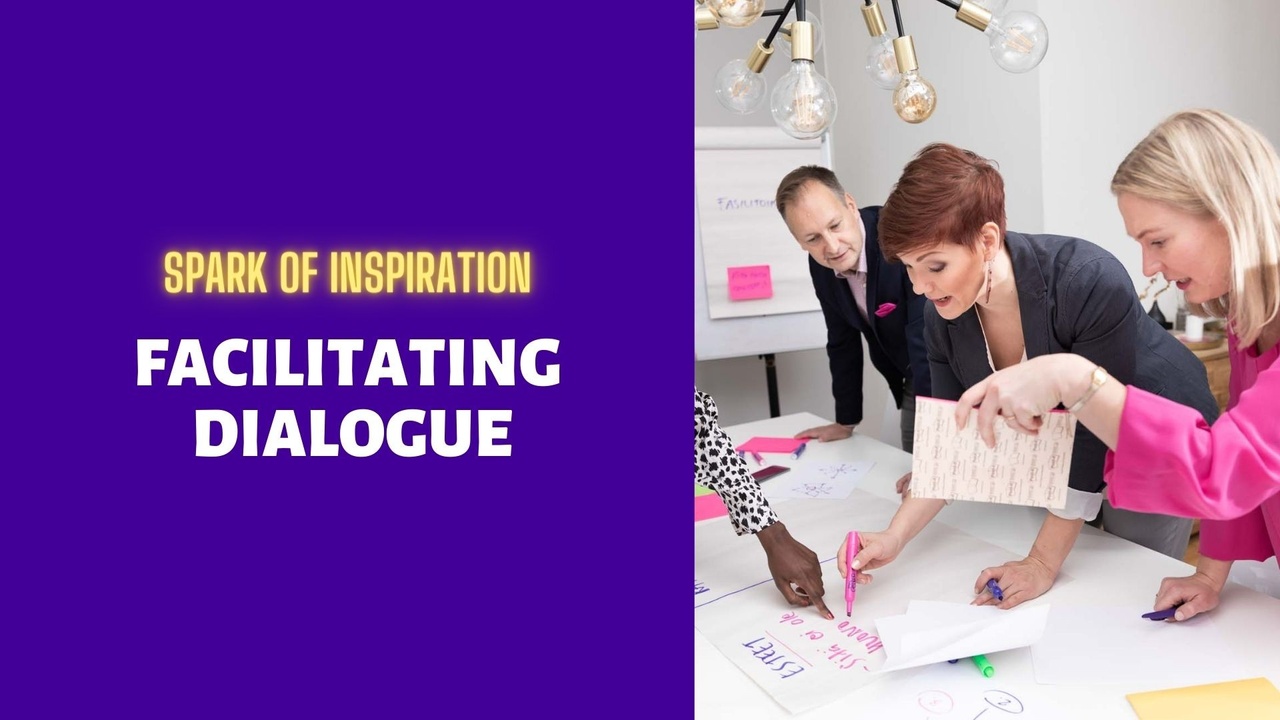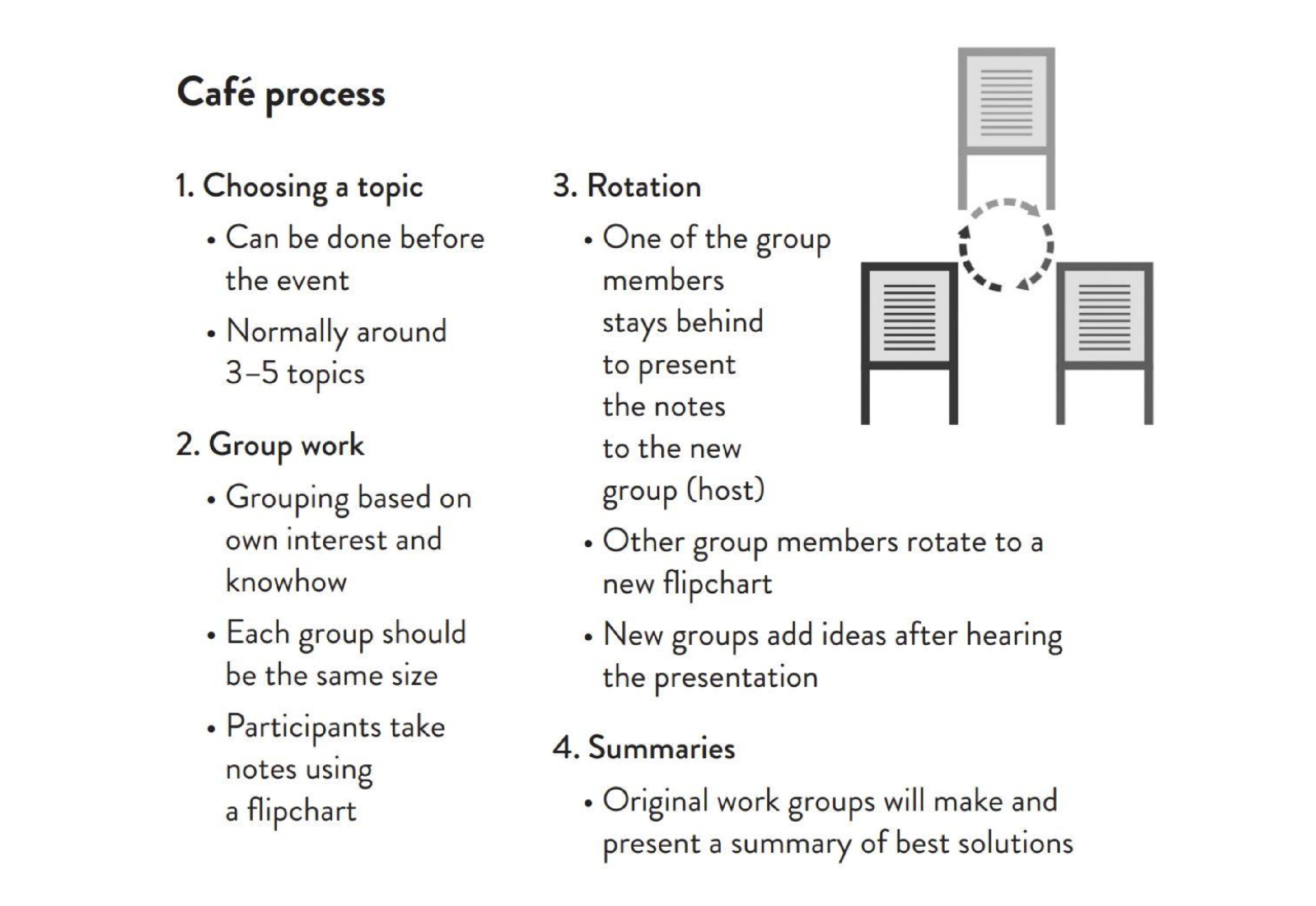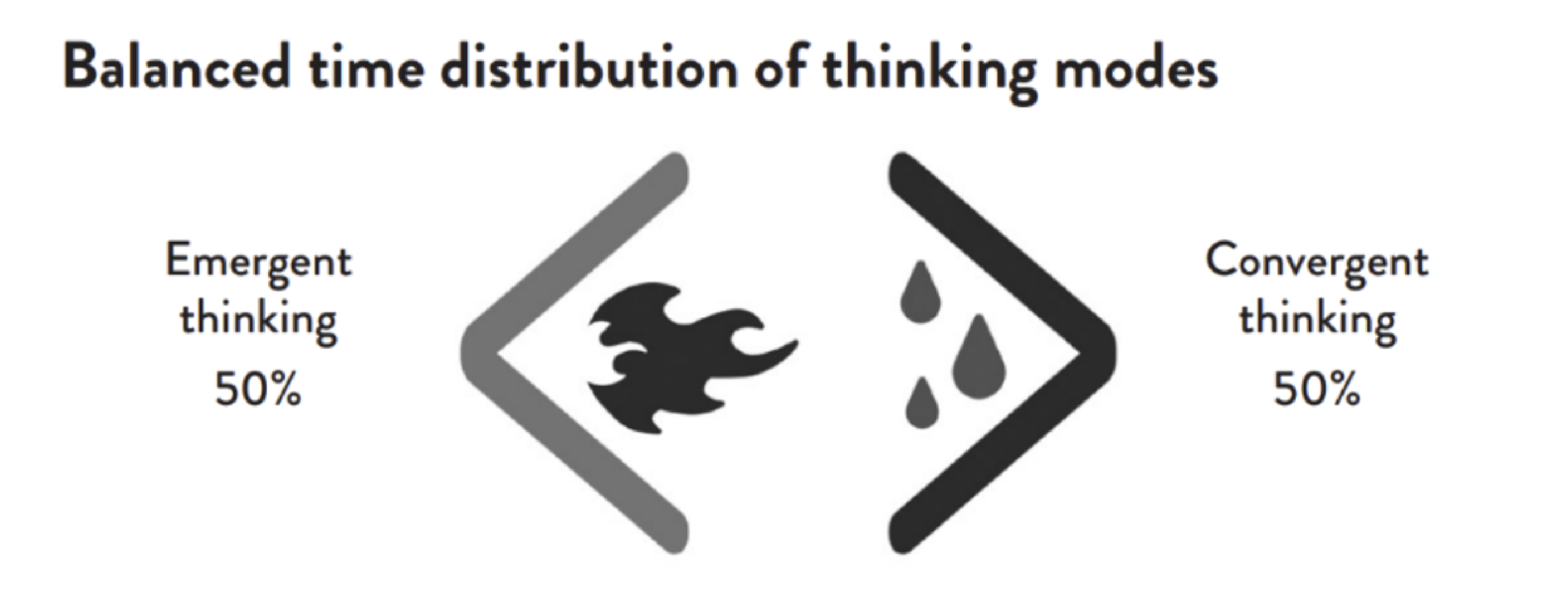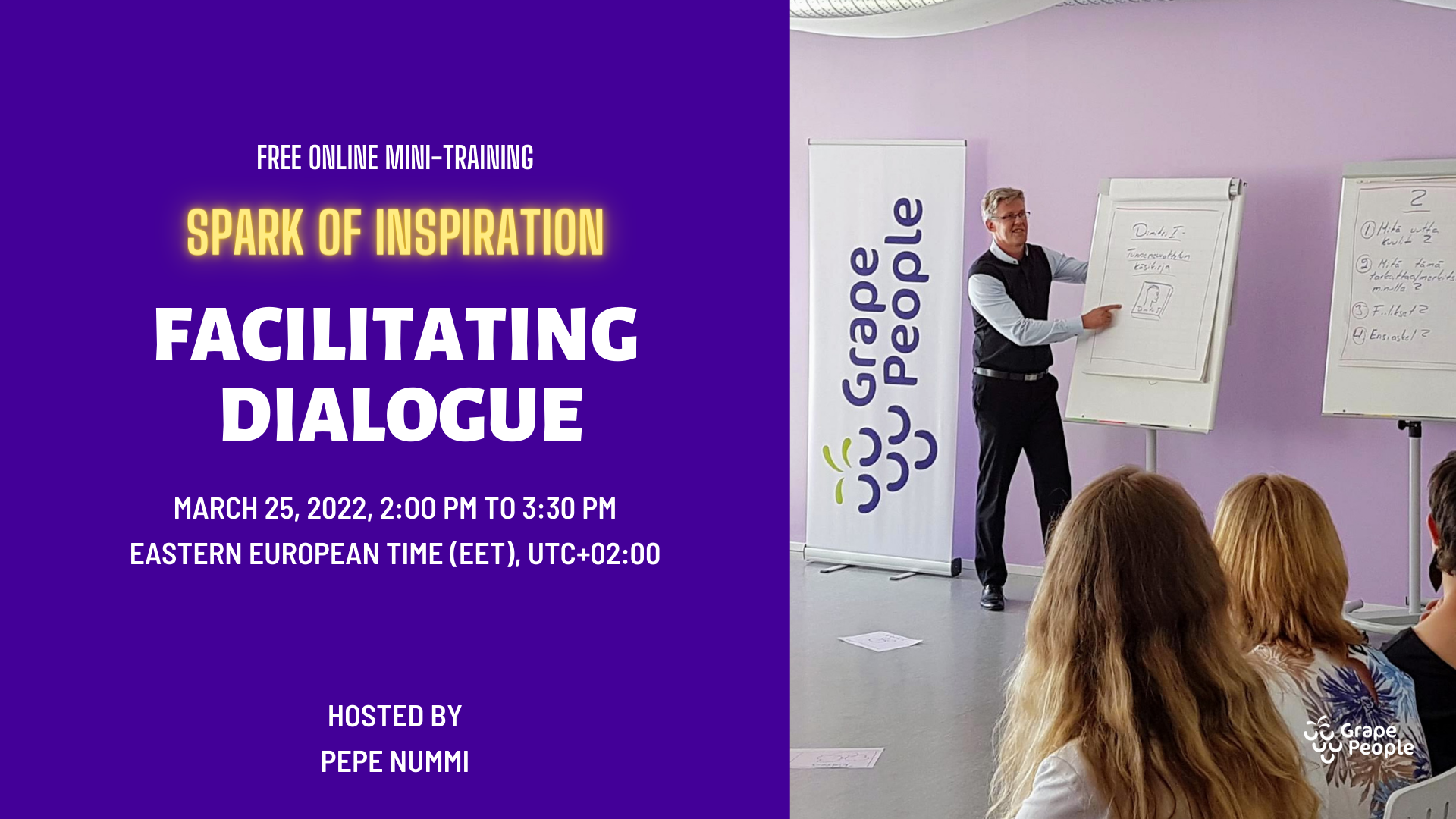Spark of Inspiration: Facilitating Dialogue

Sometimes, when I reflect on my career as a facilitator, I realize that some of my finest moments came when I sat back and let others do most of the talking. Of course, a facilitator does much more than simply take notes and observe. But giving time for people to talk with each other—collaborate and share— can create magic. In this Spark of Inspiration, I want to share a group tool designed to get people talking to each other by recreating the atmosphere of a cosy pub or café. And what to call a tool based on recreating comfortable atmospheres like restaurants and coffee shops? The Café Method, of course!
The Café Method (also known as World Café, or simply, Café) was developed in the mid-1990s by David Isaacs and Juanita Brown. According to them, the development of this tool wasn't intentional at first. David and Juanita were hosting a workshop when they noticed a trend; the best conversations took place when participants took a break to grab a coffee or a quick bite to eat. They even watched one group begin taking notes on a tablecloth while eating lunch together. For David and Juanita, this was their moment when they decided to build a group tool that captures the powerful but informal small group conversations that they were observing. They began leaving snacks like milk and cookies on the tables during their workshops and instructing people to sit down together, enjoy each other's company, and have a nice talk. They decided to call their tool the World Café.

The Café method has four steps. The first step is to choose what to talk about. You can do this in earlier parts of the workshop, or you can present content or a topic to the group as the first step of Café and then continue with the other phases of Café. The second phase of the Café calls for discussion in groups. Each group has one dedicated host to the topic whose job is to take notes, fill in gaps in the conversation, and bring newcomers up to speed. This brings us to the third phase of the Café method, rotation. This creates many simultaneous conversations at once. And we end things with the final step, the conclusion. This is where the convergent tools are added, and the group comes to an agreement and understanding of the results. Depending on the type of Café tool, sometimes groups summarise the content by talking about it, and sometimes they prioritize the content using a polling tool, like Dot Voting, for example.
World Café is very well-known and widely used, but its principles were being used long before David and Juanita stumbled upon it. I've heard of similar methods being used already in the 70s, though it is difficult to identify the original founder of the idea since there are many variations on the World Café method. There is even a Finnish version called Group Expo, which was developed by Veikko Mantere, a well-known and successful consultant.
I love using Café because it fosters Breakthrough Decision Making, the process of developing, refining, and selecting the best ideas in groups. The benefits of breakthrough decision making include new ideas and insights, acceptance of ideas within a group, and commitment to concrete steps to move forward.
I mentioned earlier that Café is a very popular tool, and it is widely used around the globe. However, I have seen far too often experienced facilitators and leaders misusing it. Many group leaders will end a session after the conversations during Café but will not use the correct tools to bring everyone back together and align them. Remember, during Café, people talk in small groups and rotate from topic to topic at regular intervals. They will understand the framework and logic of the other Café groups, but they have never talked about which solutions should be implemented. As a result, they will leave the workshop with an incomplete picture. "What did we decide?", "What next?", "What's my role now?" These questions remain for confused participants after a Café session when adequate convergent tools aren't used. So be sure to spend time on convergence.

Also, I suggest using a group tool to help people create actions and tasks to commit to and complete after the workshop ends. Don't know how to do this? Then stay tuned for the next Spark of Inspiration which will be out soon.
I hope that I have sparked your interest in giving Café a try by now. If you'd like to read more about the method and how it fits in with the broader principles of workshop design and group leadership, you can check my new book, Handbook of Professional Facilitation: Theory, Tools, and Design. Finally, I hope you find yourself in a lovely café soon, having a great chat with other smart people and reaping the benefits.
If you wish to learn more about these topics,
check out our upcoming training >>

⭐ Learn more about Breakthrough Decision Making >> ⭐
About the trainer:
Pepe Nummi is a trailblazer of facilitation and an author in Finland. He is the first certified professional facilitator in the country and one of the founders of Grape People – Finland’s first company focusing on facilitation. Over the course of his long career, he has trained over 15,000 people in more than 20 different countries.
Get to know Pepe: LinkedIn | Twitter
Feel free to reach out in case you would like a tailored training
for your team or organization: [email protected].
We are more than happy to help you!



